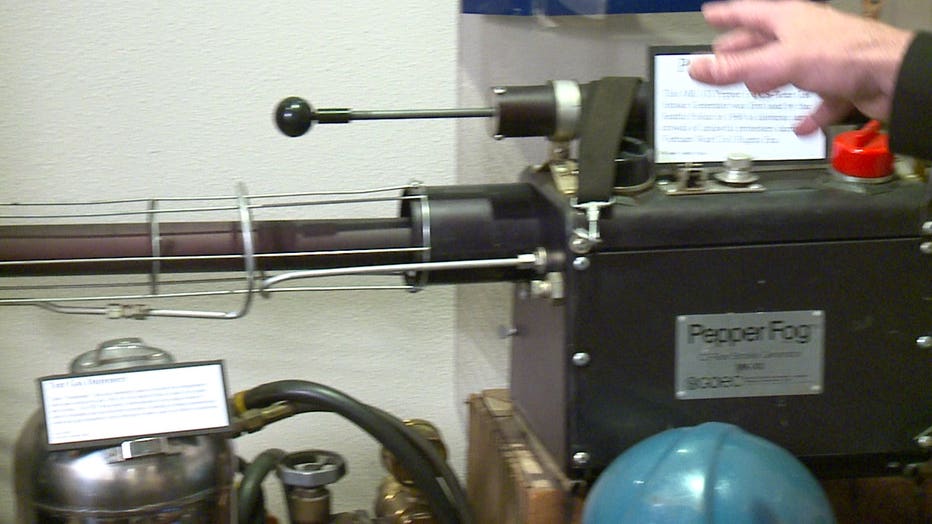Flashback: Today's officers are well-equipped for crowd control -- a far cry from what their predecessors had
SEATTLE METROPOLITAN POLICE MUSEUM -- Mayhem from ‘May Day’ protests in Seattle are just one scenario where officers have to wear special gear to protect themselves from violent crowds. Thankfully, police are better equipped and protected than ever -- a far cry from what their predecessors had. Seattle Police Ofc. Jim Ritter has more in ‘Flashback.’
“Throughout the history of the United States law enforcement officers have had to control large groups of unruly citizens during periods of civil unrest. Although that has not changed over the years the methods and equipment police use to combat the violence has changed a lot.” “Up through the 1920's police used brute force to suppress violent mobs by using brass knuckles, clubs and firearms. By the 1930's tear gas was increasingly used as a more efficient way to disperse crowds. A great example of teargas technology back in the 1930’s is a baton that doubled as a nightstick and a teargas dispenser by the officer putting a teargas cartridge in the end of the stick, pressing the trigger and launching the teargas out the end. Years later the teargas gun was invented. It held a cartridge full of teargas that was shot over the crowd and dispersed, causing the crowd to leave.” “It's important to remember that in the early days policemen assigned to riot duty wore their regular uniforms and had no protective gear at all. This method exposed them to a great deal of danger including the risk of being hit by rocks, bottles and other debris. It was a deadly situation that was eventually remedied by plain old ingenuity.” “Police departments were very poor back in the day, one of the things they had to use were military surplus items such as a gas mask from WWII. The mask allowed the officer to breathe fresh air by filtering the air outside through a charcoal filter, through the tube and up into his nose.” “By the 1960's, racial and civil unrest increased considerably and police, although poorly funded, had to rely on their own ingenuity to make things work. A perfect example of that ingenuity were helmets. One at the museum is nothing more than a baseball helmet with a Plexiglass lens attached to it. Another at the museum is just a construction helmet with the same device attached. This may not have been perfect but it was a lot better than not having anything at all to protect your head from flying debris.” “Another example of this ingenuity is a fire extinguisher with another bottle full of chemicals that was welded on to a steel holder that officers carried around to dispense teargas in the 1960's. Later on in the ‘60's a device appeared which is one of my favorites in the whole museum. It may look futuristic but I've had more officers than not complain about the fact that the teargas would be dispensed out the end and come right back in their face causing them more grief than the crowd.”

“Following Seattle's WTO riots in 1999, law enforcement agencies throughout the state began issuing officers modern safety equipment for the first time in history.” “Today's police employ a variety of constantly changing strategies that attempt to reduce civilian casualties while still protecting officers that put their lives on the line during these violent encounters.” “And that's the way it was. I'm Officer Jim Ritter and this is 'Flashback.'”

